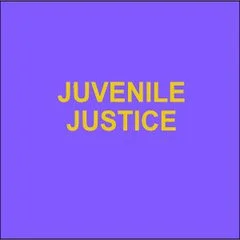By Paul Gray, Hannah Smithson and Deborah Jump
While crime has fallen rapidly over the last 20 years, serious youth violence (hereafter referred to as SYV) – defined by the Youth Justice Board (YJB) as ‘any drug, robbery or violence against the person offence that has a gravity score1 of five of more’ – is a growing concern in England and Wales (Home Office, 2018). Despite a substantial reduction in violent crime since the mid-1990s, levels of SYV remain ‘stubbornly high’ (Irwin-Rogers et al., 2020: 16). Alongside this, research has consistently found that justice-involved children have childhoods characterised by disproportionate adverse childhood experiences (hereafter referred to as ACEs) (see, for example, Baglivio et al., 2014; Boswell, 1996; Dierkhising et al., 2013; Jacobson et al., 2010). ACEs are potentially traumatic events that occur in childhood. They include, for example: experiencing violence, abuse, or neglect; witnessing domestic violence; bereavement; substance misuse within the family; mental health problems within the family; parental separation; or having a family member in prison (Centers for Disease Control and Prevention, n.d.). ACEs have been shown to have lasting, negative effects on health, wellbeing, and opportunity. They have also been shown to have an impact on the likelihood of both future violence perpetration and victimisation (Fox et al., 2014). There has been a growing awareness in recent years of the importance of being traumainformed when dealing with children who have a history of ACEs. This is especially the case with those agencies who work with justice-involved children (Glendinning et al., 2021; Liddle et al., 2016). Being trauma-informed means recognising and acknowledging the impact that ACEs can have on an individual and providing appropriate support to that person. In essence, a trauma-informed approach necessitates a change of perspective from ‘What’s wrong with you?’ to ‘What happened to you?’ (see the earlier Academic Insights paper 2020/05 by McCartan). Alongside the current emphasis on trauma-informed practice, is the growing call for the participation of justice-involved children in the development of youth justice policy and practice (Ministry of Justice and Youth Justice Board, 2019; Youth Justice Board, 2016; see also Academic Insights paper 2021/10). Participatory working is fundamental to the principle of Child First. Indeed, in Positive Youth Justice: Child First, Offenders Second, ‘children are part of the solution, not part of the problem’ (Haines and Case, 2015: 45). Research evidence indicates that when participation, engagement and inclusion processes are co-created between children and practitioners, this can produce effective practice relationships (Case and Haines, 2015; Smithson et al., 2020; Smithson and Jones, 2021). This Academic Insight presents the findings from a research study that was commissioned by Manchester City Council’s Youth Justice Service and funded through the YJB’s Reducing Serious Youth Violence (Reference Group) Pathfinder programme. Through the SYV pathfinder projects, the YJB aims to develop understanding around the drivers of SYV. To this end, this research brought together the four areas outlined above – SYV, ACEs, trauma-informed practice, and youth participation – to investigate the complex relationship between SYV and ACEs. By working in close collaboration with justice-involved children and youth justice workers in Manchester, the research had the following objectives: • to gauge the nature and prevalence of ACEs among justice-involved children in Manchester • to explore children’s own articulations of the causes and drivers of SYV • to develop a more in-depth understanding of the relationship between SYV and ACEs • to explore children’s experiences of current youth justice practice, in particular their experiences of trauma-informed practice • to co-create a resource to be used by youth justice professionals. To meet these objectives, a mixed-methods approach incorporating quantitative, qualitative, and participatory elements was adopted. The quantitative element of the research was a bespoke ACEs assessment tool, based largely on the 10-point scale used in the original ACEs study conducted in the US in the 1990s (Felitti et al., 1998). The qualitative element had two strands: semi-structured interviews with youth justice workers and drama therapists commissioned by Manchester Youth Justice Service; and narrative interviews – using the McAdams Life Story Interview method (Bauer and McAdams, 2004) – with justice-involved children. The participatory element of the research was a series of workshops involving justice-involved children, the research team, drama therapists from One Education (www.oneeducation.co.uk), and a professional sports coach. Given the sensitive nature of the research topic, the decision was made to use storytelling techniques in the workshops to elicit further discussion around SYV and ACEs: specifically the 6-Part Story Method (Dent-Brown and Wang, 2006). This method was particularly appropriate as it allowed the children to create fictional, third-person accounts and provide metaphors rather than a description of actual lived events (Dwivedi, 1997).
Academic Insights 2021/13. Manchester, UK: HM Inspectorate of Probation, 2021. 18p.




















